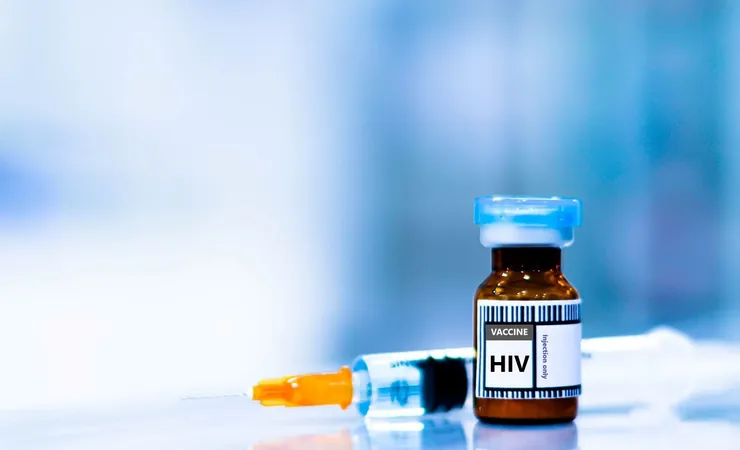
Warning: Up to 10 Million New HIV Cases Could Emerge as Global Funding Faces Drastic Cuts!
2025-04-07
Author: Li
Introduction
A shocking revelation from UNAIDS shows that new HIV infections have plummeted by 39% since 2010, dropping from 2.1 million to 1.3 million in 2023. This encouraging trend has largely been facilitated by enhanced access to HIV treatment and innovative prevention strategies, such as pre-exposure prophylaxis (PrEP) and an increased emphasis on testing and viral suppression. Of significant note, a staggering 90% of these life-saving measures were funded by nations like the United States, United Kingdom, France, Germany, and the Netherlands.
The Threat of Funding Cuts
However, this hard-earned progress is now at risk as international funding is on track to be slashed by up to 70% by 2025. This reduction threatens the lives of vulnerable populations worldwide and could undermine years of advancement in the fight against HIV.
The crisis escalated when the US Government implemented a 90-day stop on foreign aid on the first day of the second Trump administration, amidst a reevaluation of government expenditures. Meanwhile, the UK government has announced plans to cut aid from 0.5% of their gross national income to just 0.3% by 2027. Such drastic moves could stall or even dismantle programs that are essential for the continued fight against HIV.
Predicted Consequences
GlobalData’s epidemiologists predict that limiting access to vital services—like condom distribution, HIV testing, and PrEP—along with a diminishing supply of anti-retroviral therapy (ART), may lead to a resurgence of new HIV cases and heightened mortality rates. A recent mathematical modeling study published in The Lancet examined the potential fallout of the impending funding cuts across 26 low and middle-income countries, including places like Botswana and Zimbabwe. They predict that a 24% decrease in international aid, compounded by halting the President’s Emergency Fund for AIDS Relief (PEPFAR), could result in a staggering 4.43 to 10.75 million new HIV infections and between 0.77 and 2.93 million additional HIV-related deaths from 2025 to 2030.
Impact on the US and Global Outlook
The study’s findings indicate that the impact would be particularly severe in countries most dependent on international funding, and those witnessing rising HIV rates among key populations. However, it’s essential to recognize that the fallout will not be limited to low-income regions. Countries reducing their financial support, like the US, may also see a rise in new cases due to the closing of clinics and reduced access to testing and treatment services. Predictions suggest that diagnosed cases in the US could climb from 35,020 in 2025 to 35,446 by 2033, with the actual numbers possibly soaring much higher if funding continues on its present trajectory.
Call to Action
Sustaining financial support for HIV prevention, testing, and treatment programs is crucial. If international aid diminishes, the dream of achieving the United Nation’s Sustainable Development Goal to end AIDS as a public health threat by 2030 could slip further from reach. The world must act now to avert a devastating resurgence of this epidemic.
Conclusion
Stay tuned for updates on this alarming situation and the efforts being made to combat these potential consequences!



 Brasil (PT)
Brasil (PT)
 Canada (EN)
Canada (EN)
 Chile (ES)
Chile (ES)
 Česko (CS)
Česko (CS)
 대한민국 (KO)
대한민국 (KO)
 España (ES)
España (ES)
 France (FR)
France (FR)
 Hong Kong (EN)
Hong Kong (EN)
 Italia (IT)
Italia (IT)
 日本 (JA)
日本 (JA)
 Magyarország (HU)
Magyarország (HU)
 Norge (NO)
Norge (NO)
 Polska (PL)
Polska (PL)
 Schweiz (DE)
Schweiz (DE)
 Singapore (EN)
Singapore (EN)
 Sverige (SV)
Sverige (SV)
 Suomi (FI)
Suomi (FI)
 Türkiye (TR)
Türkiye (TR)
 الإمارات العربية المتحدة (AR)
الإمارات العربية المتحدة (AR)